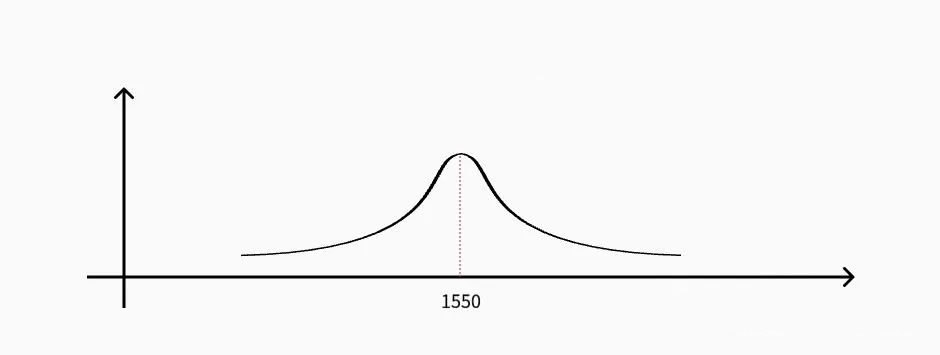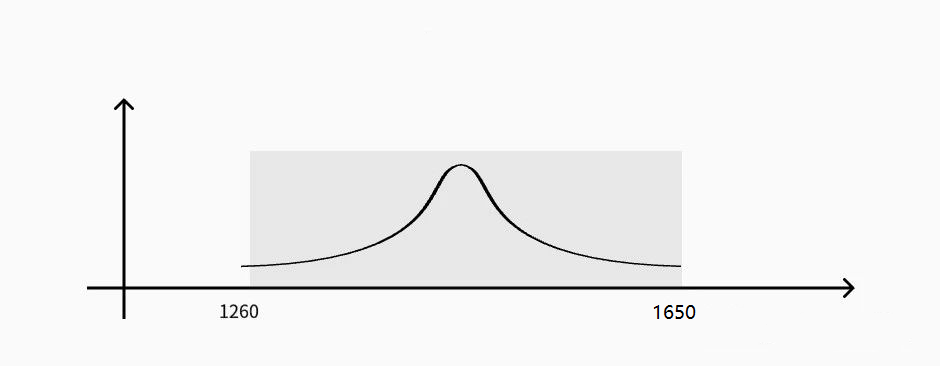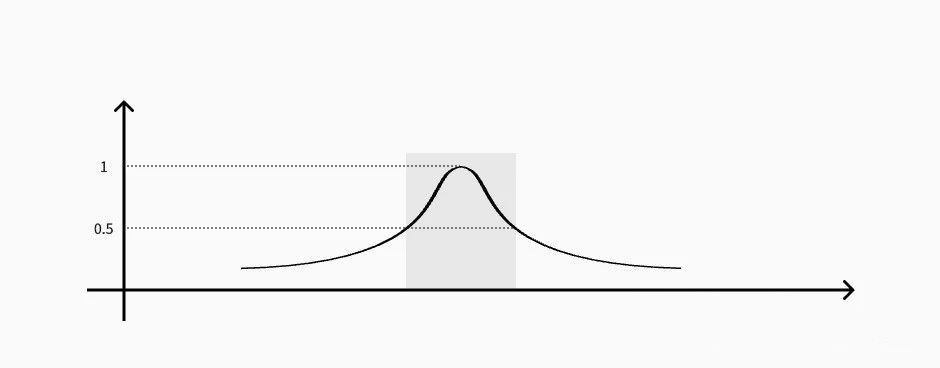Central Wavelength refers to the main working wavelength of optical devices. It represents the center frequency or wavelength of an optical signal and is often used to indicate the operating range of an optical device. The central wavelength is often used to guide the design and manufacture of optical devices. In optical communication systems, the central wavelength can determine the selection of optical fiber, light source or laser, and is of great significance for spectral analysis and optical measurements.

Central wavelength
Wavelength Range refers to the wavelength range in which optical devices can operate effectively. It represents the coverage of the optical signal on the spectrum, usually covering the range from the smallest to the largest wavelength. Wavelength range is used to describe the operating capabilities of optical devices. In fields such as optical communications, spectral analysis, and optical imaging, the wavelength range determines the frequency range of optical signals that the device can process, and has an important impact on the performance and application of the device.

Wavelength range
Bandwidth refers to the maximum frequency range of signals that an optical device can transmit, that is, the frequency width/spectral width. Bandwidth determines the maximum amount of information that an optical device can process and is critical for high-speed data transmission and signal processing.

Bandwidth
Central wavelength and wavelength range
Both center wavelength and wavelength range involve the characteristics of optical devices over the frequency spectrum. The center wavelength is a specific wavelength value, which indicates the frequency or wavelength at which the optical device mainly operates, and is usually located at the center of the wavelength range. The wavelength range is an interval, which indicates the wavelength range in which the optical device can operate effectively, including the range around the center wavelength.
Wavelength range and bandwidth
The operating wavelength range of an optical device is often referred to as its bandwidth. In optical devices, light signals within a specific wavelength range are transmitted, processed or amplified. This wavelength range can be considered as the frequency range of optical signals, similar to the frequency range occupied by signals in communications. Therefore, the operating wavelength range of an optical device is usually called bandwidth, to indicate the width of the frequency range of optical signals that it can handle. Both operating wavelength range and bandwidth describe the operating limitations of an optical device in terms of frequency or wavelength. They may be used interchangeably when describing the performance of an optical device. It should be noted that although both involve frequency, bandwidth focuses more on the frequency width of the signal and the data transmission capacity, while operating wavelength range focuses more on the physical wavelength range in which the optical device can operate.
Generalized 3db bandwidth
3dB bandwidth refers to the width of the frequency range where the signal power drops to half of its maximum value within a frequency range. This concept is very important in the field of electronics and communications.

3dB bandwidth
The purpose of 3dB bandwidth
- Frequency response analysis: 3dB bandwidth is used to describe the frequency response of an electronic or communication system. It tells us the frequency range within which the system can transmit signals and how the signals are attenuated within this range.
- Filter Design: In filter design, the 3dB bandwidth is used to determine the bandwidth range of the filter. This helps engineers select appropriate filters to meet specific signal processing requirements.
- Communication System: In communication systems, 3dB bandwidth is an important indicator for evaluating channel bandwidth. It determines the frequency range in which the signal can be transmitted, thus affecting the data transmission rate and quality of the communication system.
- Power Analysis: The 3dB bandwidth can also be used to analyze the power distribution of the signal. It can help determine in which frequency ranges the signal’s power is concentrated, as well as the signal’s frequency characteristics.
In short, 3dB bandwidth is an important indicator to describe the frequency range of a signal. It has a wide range of applications in electronics, communications, signal processing and other fields.
Why choose 3db?
Using 3dB as a reference was because it provides a clear and universally accepted standard for describing the frequency range of a signal. This point is very useful for determining the bandwidth of a signal because it provides a clear boundary when the signal power drops to half of its maximum value.
3dB bandwidth provides engineers and researchers with a common standard for evaluating and comparing the performance of different systems or components.
The theoretical support for 3dB bandwidth is based on filtering theory and frequency response analysis in signal processing. This definition makes 3dB bandwidth a widely accepted and universal standard that is easy to calculate and understand. Based on these theories and mathematical principles, 3dB bandwidth is considered to be an important indicator for describing the frequency range of signals and has wide applications and practical significance.
Is it okay to choose 6db, 20db or other values?
It is common practice to use 3dB as a reference point because it is widely accepted in the engineering and communications fields and provides a clear standard to describe the bandwidth range of a signal. 6dB, 20dB or other values are not as common as 3dB. While other values may be used as a reference in certain specific situations, they are generally not as common or standardized as 3dB. In summary, it can be used, but not recommended!
